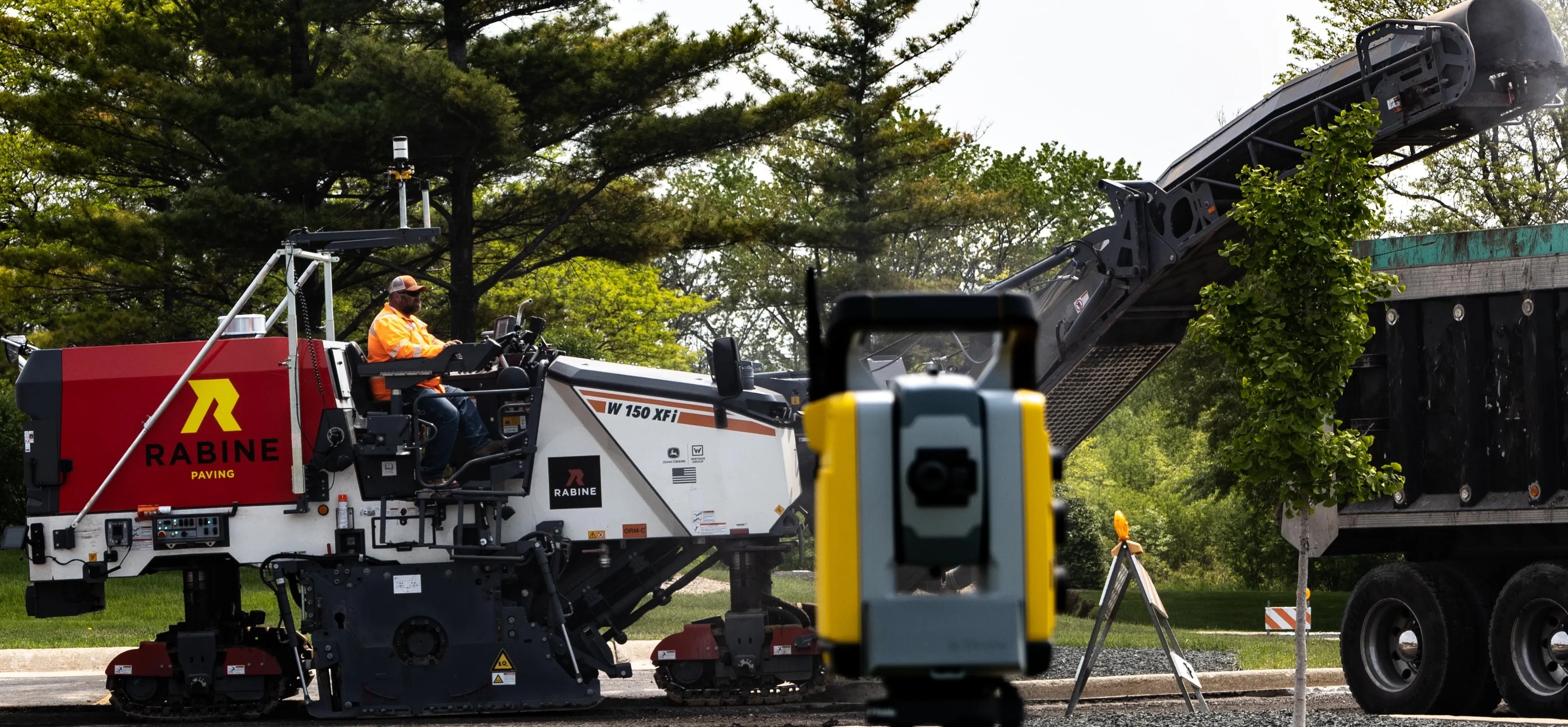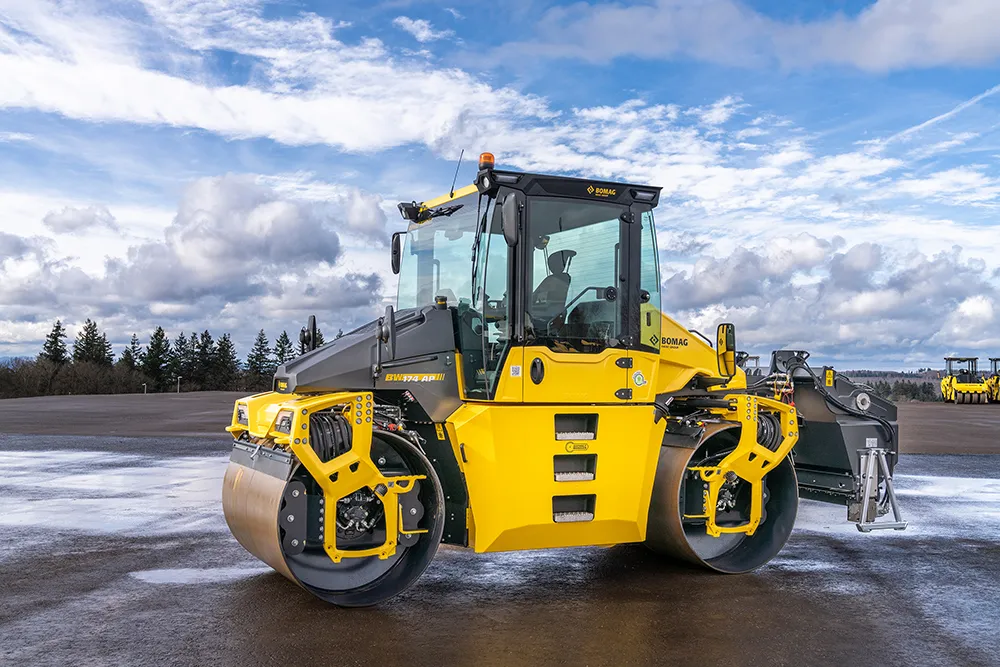
Vehicle automation is often mentioned as one of the biggest disruptive technologies, both economically and environmentally. But for that to ever happen, the surrounding infrastructure must be adapted to support automated vehicles when it comes to efficiency and safety. A connected infrastructure is key for the design and certification procedures as well as for testing environments that need to be deployed. Within this scenario, the connectivity between the infrastructure and the vehicles is also necessary to ensure operational conditions in the transition period, which can last for decades.
Apart from the automotive and C-ITS aspect in managing the traffic of self-driving cars, another important issue must not be neglected: the road itself and its readiness to be read by driver assistance technologies. Harald Mosböck, Swarco's Vice President Road Marking Systems for Europe and the APMEA regions and Vice President of the European Union Road Federation (ERF), knows about the role of road markings for human and machine vision. He answers the questions whether our roads are ready for the advent of self-driving cars with “not really”.
Road markings and traffic signs still lack uniformity
“Lane markings are currently read by two kinds of sensors: camera and lidar. Even the most advanced vehicles equipped with high-definition maps need such sensors in order to capture the lane markings and traffic signs and to determine whether all the data is really comparable and fitting together. The point is that road markings and traffic signs still lack uniformity on roads. There are too many differences. Improving uniformity is a prerequisite to increase the reliability of readings by different types of sensors,” explains Mosböck.
On an international level, it is mainly the Japanese, the American and the European standardisation bodies who push to improve and standardise road markings. The latest edition of the North American Manual on Uniform Traffic Control Devices (MUTCD) is to contain a requirement for major roads that normal lines be 150 mm (six inches) wide and markings more uniform, which was one of the key deficiencies for CAV implementation.
Just recently a major standardisation body proposed to the Federal Highway Administration that lane markings on the highway network in the future should not only have a standardised width, but there should be a general requirement for dotted lines at highway exits and a standardised gap width of interrupted lines. Right now, there is work in progress addressing the topic of better retro reflectivity, a very challenging subject. Another issue is how lane markings in roadwork zones can be improved to attain a reliable and consistent machine readability for automated or assisted driving.
Addressing the predominant actions in Europe, pushed also by industry associations like the European Union Road Feder¬ation, in terms of improving road markings, Harald Mosböck hints at the European Commission’s demand in the Third Mobility Package that “Member States shall ensure that road markings and road signs are properly designed and maintained in such a way that they can be easily and reliably recognised by both human drivers and vehicles equipped with driver assistance systems or higher levels of automation.”
Expert group
In 2019, the European Council decided to revise the road safety management directive and charged the European Commission to form an expert group and work on how road markings and traffic signs should be done to be best readable for vehicles and, of course, for humans as well. The expert group took up work, but due to the pandemic the entire process is delayed. First results were expected by the middle of 2021 but won’t now be available before spring 2022. “In general, we can say the communication between carmakers, industry associations and Brussels on the expectations for the quality of road markings has already greatly improved,” Mosböck comments.
One recommendation elaborated by the ERF is very similar to the tendencies in the USA. The formula was created taking into account only the human eye, with the goal to improve road safety. Interestingly, several studies proved that what is good for the human eye to support safe and comfortable driving also works very well for machine vision. The “150 x 150 formula” recommends a line width of 150 mm and a retroreflectivity (RL) > 150 mcd/m²/lx under dry conditions (RL > 35 mcd/m²/lx under wet conditions).

To find out more about the performance of cameras and lidar to read lane markings, Swarco carried out tests in the world’s biggest climate tunnel in Vienna with Austrian partner company ZKW, a leader in automotive lighting technology.
We put eight different kinds of lane markings from standard to high performance systems and had them read by three different kinds of cameras and eight different kinds of lidar sensors. We simulated 24 different weather conditions, such as perfect daylight to nighttime conditions, wind, stormy weather, heavy rain and foggy conditions.
When it comes to the findings of the tests, the rule of thumb also expressed by Mobileye, the worldwide leader in in-vehicle camera technology was confirmed: What a camera can read, is also readable by the human eye. What the human eye can read, may not necessarily be readable by a camera.
Lidar can read an orange road marking very accurately
“On the one hand, a strong point of the cameras is their identification of contrast. On the other hand, they show a weakness when they have to read when glare light is coming from vehicles on the oncoming lane. When we are talking about the lidar sensors, some highly retro-reflective road markings are absolutely increasing the readability and detectability by lidar,” says Mosböck. “Also, when we are going even to a near infrared range with some special pigmentation, the lidar can read an orange road marking very accurately. This is important in the light of ongoing discussions in the USA whether lane markings in roadwork zones should be orange in the future. The lidar proved to not be affected by glare. So, if you combine camera and lidar in a car, you will end up with a really good readability and reliability for the assisted driving.”
Of course, there is also a financial aspect in improving road markings, which still has a question mark.
“Whenever you discuss higher performance of lane markings with the automotive industry or road authorities, the first question is always: Who is going to pay for that? My belief is that all over Europe we need better performing lane markings on the road networks. Once we have achieved a level which is most suited for the human eye, then it will work for automated vehicles as well. There is still a long way to go, because due to the road authorities lacking sufficient fundings, I doubt that they will be able to finance high performance lane markings for all road networks. That is why I hope for major progress in better road markings for human and machine vision first on the long-distance arteries of the Trans-European Networks,” Mosböck looks optimistically into the future.








